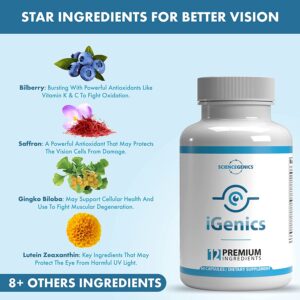As we age, our bodies go through many changes, and one of the most noticeable shifts happens in our metabolism. If you’ve recently turned 50 and noticed that it’s harder to maintain your weight, feel energized, or stay active like before, you’re not alone. Many people struggle with a slower metabolism after midlife, which can impact overall health, energy levels, and confidence.
The good news is that slowing metabolism doesn’t have to be permanent. With the right habits, nutrition, and lifestyle adjustments, you can learn how to boost metabolism after 50 and keep your body functioning at its best.
This comprehensive guide will explain why metabolism slows down with age, and share proven strategies to improve it naturally.
Why Does Metabolism Slow Down After 50?
Before we dive into practical solutions, it’s important to understand why our metabolism changes with age.
- Loss of Muscle Mass: Starting around age 40, adults lose about 3–8% of muscle mass per decade. Since muscle burns more calories than fat, this decline directly impacts metabolic rate.
- Hormonal Changes: Shifts in estrogen, testosterone, and thyroid hormones can lower energy expenditure and increase fat storage.
- Lifestyle Factors: Sedentary habits, poor sleep, and high stress contribute to slower calorie burning.
- Reduced Activity Levels: Many people naturally become less active with age, further slowing metabolism.
Understanding these factors helps us target the right methods to speed things up again.
How to Boost Metabolism After 50 Naturally
The following strategies are backed by science and can make a noticeable difference in your energy, weight management, and overall well-being.
1. Prioritize Strength Training
Muscle is your metabolism’s best friend. The more lean muscle you have, the more calories your body burns—even at rest.
Tips:
- Lift weights 2–3 times per week.
- Focus on compound exercises like squats, push-ups, and deadlifts.
- If you’re new, start with bodyweight exercises or resistance bands.
Strength training is one of the most effective ways to boost metabolism after 50 because it counteracts age-related muscle loss.
2. Increase Daily Movement
You don’t need to spend hours at the gym to stay active. Incorporating small bursts of movement throughout the day keeps your metabolism firing.
Ideas:
- Take brisk walks after meals.
- Use stairs instead of elevators.
- Stand up and stretch every hour.
- Try gardening, dancing, or cycling.
Staying active not only burns calories but also improves heart health and reduces stress.
3. Eat Enough Protein
Protein plays a critical role in building and maintaining muscle while also boosting metabolism through the thermic effect of food (TEF)—the energy required to digest and process nutrients.
Protein-rich foods to include:
- Lean meats (chicken, turkey, fish)
- Eggs
- Beans and lentils
- Greek yogurt and cottage cheese
- Nuts and seeds
Aim for at least 20–30 grams of protein per meal to support muscle and metabolism.
4. Stay Hydrated
Even mild dehydration can slow metabolism and leave you feeling fatigued. Drinking enough water helps the body process calories more efficiently.
Pro tip: Drinking cold water may slightly increase calorie burn because the body uses energy to warm it up. Herbal teas and mineral water are also great choices.
5. Get Quality Sleep
Poor sleep disrupts hormones like leptin and ghrelin, which regulate hunger and energy. It also increases cortisol levels, which can lead to fat storage.
Tips for better sleep:
- Aim for 7–9 hours per night.
- Keep your bedroom cool and dark.
- Avoid screens an hour before bedtime.
- Practice relaxation techniques such as breathing exercises or meditation.
Quality rest is essential when learning how to boost metabolism after 50 because it keeps your body in balance.
6. Manage Stress Levels
Chronic stress keeps cortisol levels high, which can slow metabolism and encourage fat storage, especially around the midsection.
Stress-busting activities:
- Yoga or tai chi
- Meditation and deep breathing
- Journaling
- Spending time in nature
Even 10–15 minutes of daily relaxation can make a big difference.
7. Add Interval Training
While walking and steady cardio are excellent for overall health, adding short bursts of high-intensity exercise (HIIT) can rev up metabolism.
Example:
- Walk briskly for 2 minutes, then jog or walk uphill for 30 seconds.
- Repeat for 20 minutes.
This style of training boosts calorie burn during and after exercise.
8. Eat Smaller, Balanced Meals Throughout the Day
Skipping meals can backfire by slowing metabolism and causing overeating later. Instead, eat balanced meals every 3–4 hours to keep energy steady.
A balanced plate should include:
- Lean protein
- Whole grains or starchy vegetables
- Healthy fats
- Colorful vegetables
9. Support Metabolism with Nutrient-Rich Foods
Certain nutrients are especially important for midlife metabolism.
Key nutrients:
- Vitamin D: Supports hormone balance and muscle strength.
- Calcium: Vital for bone health and energy metabolism.
- Omega-3 fatty acids: Reduce inflammation and improve fat-burning efficiency.
- B vitamins: Support energy production.
10. Consider Metabolism-Boosting Drinks
Some natural drinks can gently increase metabolism.
- Green tea: Contains catechins and caffeine for fat oxidation.
- Black coffee: Boosts alertness and calorie burn in moderation.
- Lemon water: Supports digestion and hydration.
Common Mistakes to Avoid
When focusing on how to boost metabolism after 50, avoid these common pitfalls:
- Overdoing cardio: Too much steady cardio without strength training can reduce muscle mass.
- Eating too little: Extreme calorie restriction slows metabolism further.
- Neglecting recovery: Skipping rest days can lead to burnout and injury.
- Ignoring protein: Carbs and fats are important, but protein should remain a priority.
Final Thoughts
Slower metabolism after 50 is a natural part of aging—but it doesn’t mean you’re powerless. By incorporating strength training, staying active, eating enough protein, managing stress, and prioritizing rest, you can effectively learn how to boost metabolism after 50 and enjoy more energy, better weight management, and overall vitality.
Remember, small changes add up. Consistency is more important than perfection. Start with one or two strategies from this guide and build on them over time. With patience and persistence, you’ll notice improvements in both your body and your energy levels.



